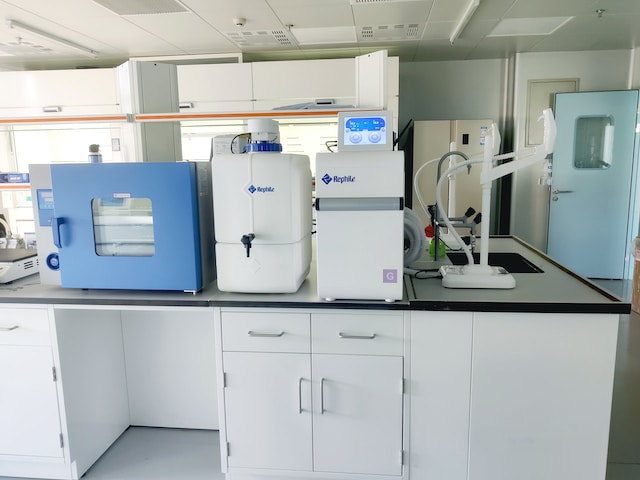The field of diagnostics has witnessed significant advancements over the years, leading to the development of various technologies that enable rapid and accurate testing. Among these technologies, the universal lateral flow assay has emerged as a game-changer in point-of-care diagnostics. This article explores the intricacies of the universal lateral flow assay, its applications, benefits, and future prospects.
Table of Contents
- Introduction: The Importance of Point-of-Care Diagnostics
- Understanding Lateral Flow Assays
- Evolution of the Universal Lateral Flow Assay
- Components and Working Principle of a Universal Lateral Flow Assay
- Advantages of Universal Lateral Flow Assays
- Applications of Universal Lateral Flow Assays
- Challenges and Limitations of Universal Lateral Flow Assays
- Future Directions and Innovations
- Conclusion
- FAQs (Frequently Asked Questions)
Introduction: The Importance of Point-of-Care Diagnostics
In today’s fast-paced world, timely and accurate diagnostic results are crucial for effective healthcare interventions. Point-of-care diagnostics play a pivotal role in providing rapid and on-site testing, eliminating the need for laboratory infrastructure, and minimizing turnaround time. Universal dispensers have emerged as a promising technology, offering simplicity, affordability, and reliability in various diagnostic settings.
Understanding Lateral Flow Assays
Lateral flow assays, also known as immunochromatographic tests, are simple and portable diagnostic tools used for the qualitative or quantitative detection of specific analytes in various samples. They are commonly employed in pregnancy tests, infectious disease screening, drug testing, and food safety analysis. These assays rely on the migration of analytes through a porous membrane via capillary action, where the presence of the target analyte is captured and produces a visible signal.
Evolution of the Universal Lateral Flow Assay
Traditional lateral flow assays were designed to detect a specific analyte or a limited group of analytes. However, the need for multiplexed testing and broader detection capabilities led to the development of the universal lateral flow assay. This innovative approach allows simultaneous detection of multiple analytes, enhancing the diagnostic potential and expanding the applications of lateral flow assays.
Components and Working Principle of a Universal Lateral Flow Assay
A universal lateral flow assay comprises several key components, including sample pads, conjugate pads, a nitrocellulose membrane, and an absorbent pad. The working principle involves the interaction between the target analyte, specific antibodies, and colored particles or enzymes. The target analyte binds to the specific antibodies immobilized on the test line, resulting in the formation of a visible signal. The intensity of the signal is proportional to the concentration of the analyte in the sample.
Advantages of Universal Lateral Flow Assays
Universal lateral flow assays offer several advantages over traditional assays. Firstly, they enable simultaneous detection of multiple analytes, saving time and resources. Secondly, these assays are user-friendly, requiring minimal training and technical expertise. Additionally, universal lateral flow assays provide rapid results, typically within minutes, facilitating timely clinical decisions and interventions. Moreover, these assays are portable and can be used in resource-limited settings, making them ideal for point-of-care diagnostics.
Applications of Universal Lateral Flow Assays
The applications of universal lateral flow assays are vast and diverse. In the medical field, they are employed for infectious disease diagnosis, hormone analysis, cardiac biomarker detection, and cancer marker screening. In veterinary medicine, these assays aid in the rapid detection of diseases in animals. Universal lateral flow assays also find utility in environmental monitoring, food safety testing, and forensic investigations.
Challenges and Limitations of Universal Lateral Flow Assays
While universal lateral flow assays offer significant advantages, they do have certain challenges and limitations. One of the primary concerns is the potential for cross-reactivity between different analytes, which may lead to false-positive or false-negative results. Achieving high sensitivity and specificity for each target analyte in a multiplexed assay can be challenging. Furthermore, the detection limit of universal lateral flow assays may not be as low as that of laboratory-based techniques, limiting their utility in some applications.
Future Directions and Innovations
The field of universal lateral flow assays continues to evolve, with ongoing research and development aimed at overcoming current limitations and exploring new possibilities. Future advancements may include improved detection strategies, enhanced sensitivity and specificity, and the integration of digital technologies for real-time analysis. Additionally, the development of customizable lateral flow platforms and the incorporation of microfluidics can further enhance the versatility and diagnostic capabilities of universal lateral flow assays.
Conclusion
The universal lateral flow assay has revolutionized point-of-care diagnostics by enabling rapid and simultaneous detection of multiple analytes. With its user-friendly nature, affordability, and portability, this technology has immense potential in various healthcare and non-medical applications. As researchers continue to refine and innovate in this field, universal lateral flow assays are set to become even more powerful and indispensable tools in the realm of diagnostics.
FAQs (Frequently Asked Questions)
Q1: How long does it take to obtain results using a universal lateral flow assay? A: Universal lateral flow assays typically provide results within minutes, making them ideal for rapid diagnostic testing.
Q2: Are universal lateral flow assays accurate? A: Universal lateral flow assays can offer high accuracy, but it depends on the specific design, optimization, and validation for each target analyte.
Q3: Can universal lateral flow assays be used in resource-limited settings? A: Yes, universal lateral flow assays are particularly suitable for resource-limited settings due to their simplicity, portability, and minimal infrastructure requirements.
Q4: What are the main challenges of multiplexing in universal lateral flow assays? A: Achieving high sensitivity and specificity for each target analyte in a multiplexed assay is a significant challenge, along with the potential for cross-reactivity between analytes.
Q5: How can universal lateral flow assays contribute to food safety testing? A: Universal lateral flow assays can detect contaminants or pathogens in food samples, ensuring quick and reliable food safety analysis.
